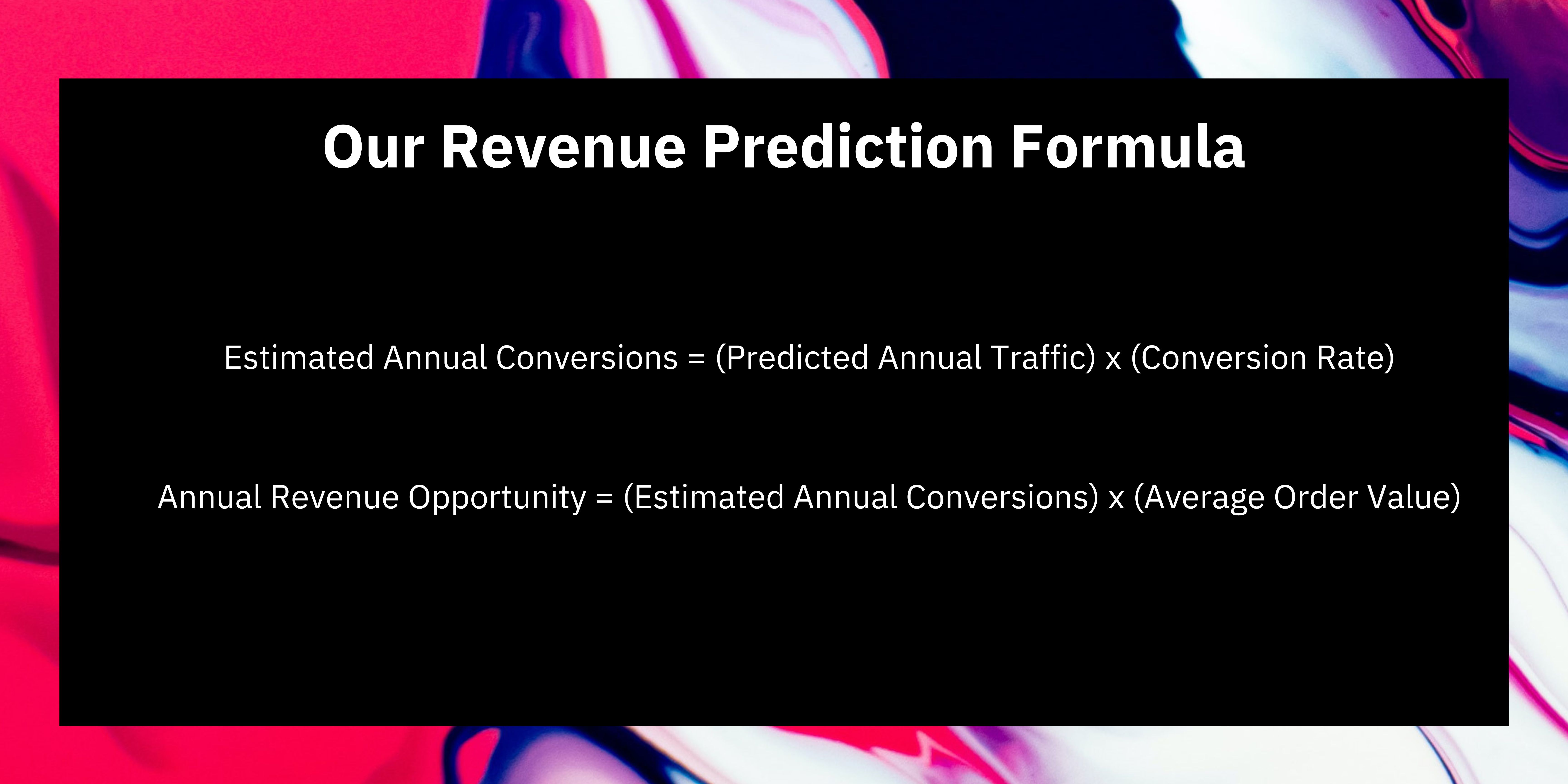
How We Use Search Data to Uncover Huge Revenue Opportunities
October 24, 2023

Molly Sishton
Strategy
Hello, Molly here - covering a loaded, frequently asked question…
“What return on investment can I expect from SEO?”
Obviously this is a multifaceted question as it can depend on a number of factors, from your monthly commitment to content development and budget for link building, to the market opportunities and the domain authority of your website.
And, that’s the answer I typically give all our clients (we don’t make false promises and will always set realistic expectations).
However, what we can do is detail the revenue opportunities behind your SEO strategy. We have a unique approach and use search and historical company data to predict revenue opportunities. Now, I promise this article isn’t filled to the brim with tech-jargon and overcomplicated detail.
Let me break it down. It's straightforward, strategic, and, honestly, if done right, this could be a game-changer for your business.

1 - Dive into SEO research
First up, SEO research. This is where we peek into the general market and have a look-see at what the competition is up to. The objective? Finding those golden keywords or phrases that people are typing into search engines. Why? Because if they're searching for it, they're interested in it. And if they're interested, well, that's a potential sale waiting to happen
Finding revenue in search data? It's like finding money in your old jeans, but on a much, much bigger scale.
2 - Analyse the traffic potential
Next, we review the search data to define how many people are searching for each of the keywords every year. But, not all keywords are made equal. Some are super competitive, while others might give us a fighting chance to appear on the first page of search results.
We get a bit nerdy here – setting targets to see how realistic it is for us to rank for each term.
And then comes the fun part – calculating the potential surge in website traffic if we hit those targets. Believe me, it’s not magic, but when the numbers come out right, it definitely feels like it.
3 - Predict the revenue
This is where it gets exciting. We don’t just want traffic; we want that traffic to turn into revenue. So, using a bit of historical data, we assign a conversion rate to our predictions.
Let’s say 3% of the visitors end up making a purchase. If we multiply this rate with our traffic predictions, voila, we have our estimated annual conversions just from those keyword searches!
We can take this even further by bringing average order value into the equation! When we multiple the company's average order value with our conversion predictions, we get a glimpse of the annual revenue opportunity.

4 - Grouping the opportunities
Finally, we don’t just leave these keywords in silo. We cluster or group them into relevant categories. This gives us a clearer picture of which product categories or content topics have the juiciest revenue opportunities.

Case Study
Read about how we helped Solar Medical find opportunities to grow their search presence and drive D2C sales.
16M
Worth of additional revenue identified
Why does all this matter?
You might be thinking, "Okay, sounds great, but why should I care?" Here's the deal. Armed with this information, businesses can smartly prioritise. If you know a particular product or content topic can potentially rake in large amounts of sales, wouldn’t we want to produce more of that? It gives us a roadmap, showing where the opportunities lie.
Using search data to predict revenue isn’t just a fancy strategy – it’s smart business. It helps companies prioritise their content production and product promotions, ensuring every move is a calculated step toward success.
Curious? Eager to rise above the competition? Reach out today, we’d love to chat.
